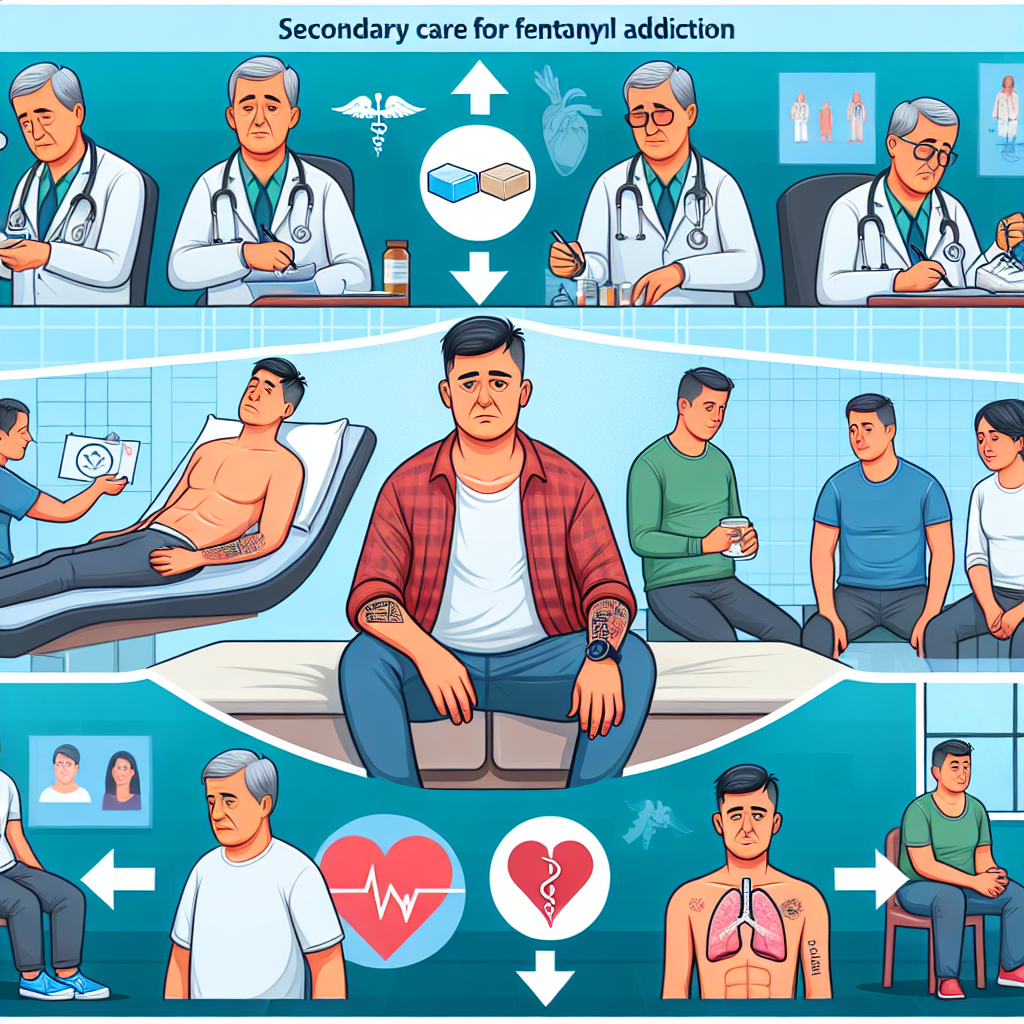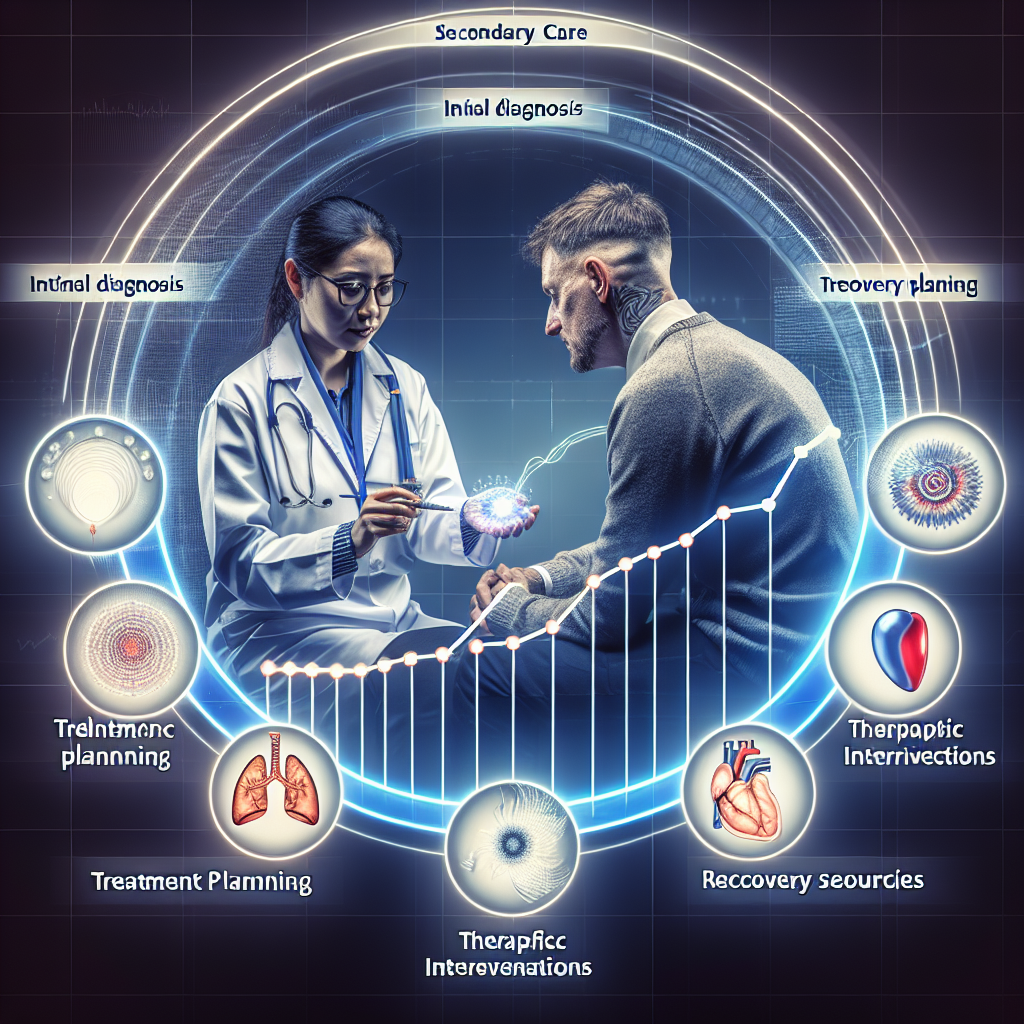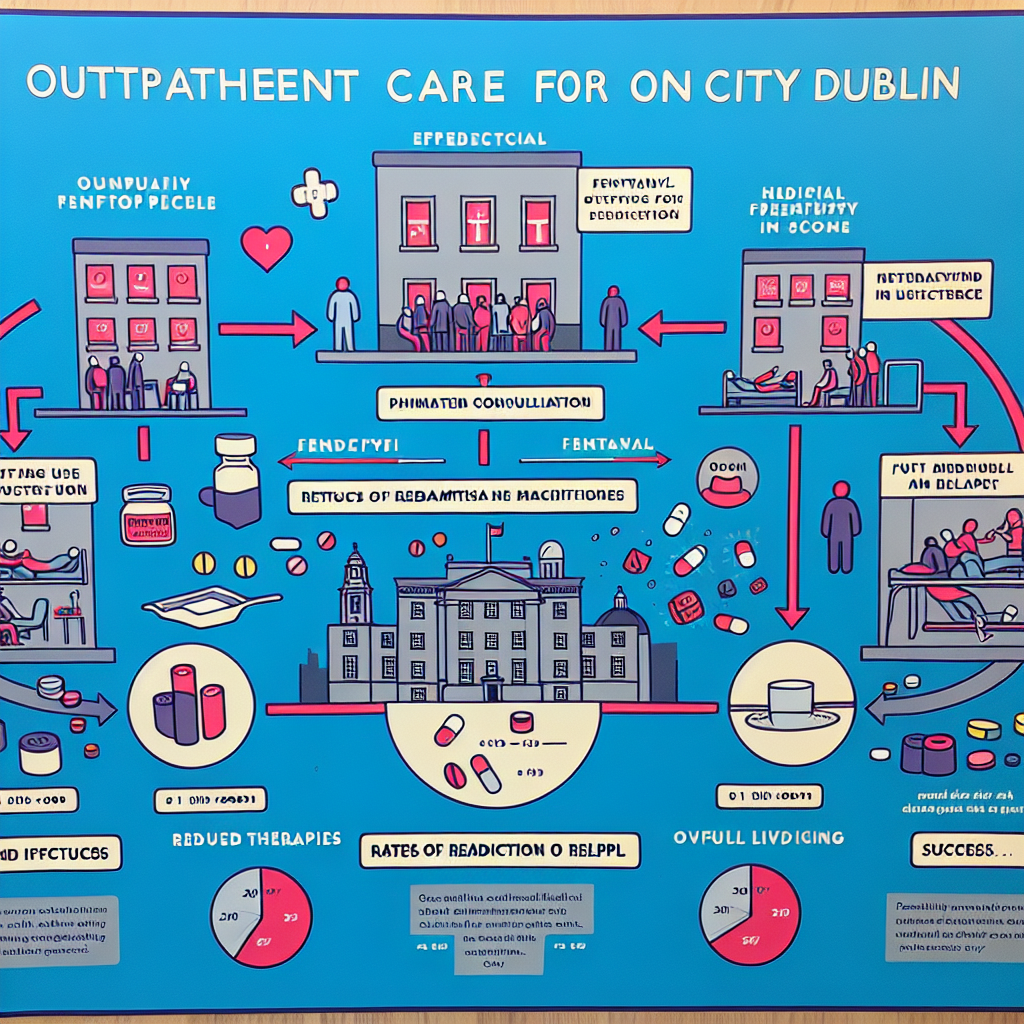-
Table of Contents

“Comprehensive Support and Specialized Treatment for Lasting Recovery from Fentanyl Addiction”
Introduction
Secondary care for fentanyl addiction typically involves specialized medical and therapeutic interventions aimed at managing withdrawal symptoms, addressing psychological dependence, and promoting long-term recovery. Patients can expect a comprehensive treatment plan that includes medically supervised detoxification to safely manage withdrawal, followed by intensive inpatient or outpatient rehabilitation programs. These programs often incorporate a combination of medication-assisted treatment (MAT), such as the use of methadone or buprenorphine, and various forms of psychotherapy, including cognitive-behavioral therapy (CBT) and group counseling. Additionally, secondary care may provide support for co-occurring mental health disorders, educational resources, and aftercare planning to ensure sustained recovery and prevent relapse. The goal is to offer a structured and supportive environment that addresses both the physical and psychological aspects of fentanyl addiction.
Comprehensive Treatment Plans in Secondary Care for Fentanyl Addiction
When facing the daunting challenge of fentanyl addiction, secondary care offers a beacon of hope through comprehensive treatment plans designed to address the multifaceted nature of this condition. These plans are meticulously crafted to provide a holistic approach, ensuring that every aspect of the individual’s well-being is considered. As you embark on this journey, it is essential to understand what to expect from secondary care and how it can pave the way toward recovery.
Initially, secondary care begins with a thorough assessment conducted by a team of healthcare professionals. This evaluation is crucial as it helps to identify the severity of the addiction, any co-occurring mental health disorders, and the individual’s overall physical health. By gathering this information, the team can tailor a treatment plan that is uniquely suited to the individual’s needs, thereby increasing the likelihood of a successful recovery.
Following the assessment, the cornerstone of secondary care is often medical detoxification. This process involves the supervised withdrawal from fentanyl, ensuring that the individual is safe and as comfortable as possible. Medical professionals may administer medications to alleviate withdrawal symptoms and manage cravings, which can be intense and challenging to overcome. The goal of detoxification is to cleanse the body of the substance, setting the stage for further therapeutic interventions.
Once detoxification is complete, the focus shifts to therapy and counseling, which are integral components of comprehensive treatment plans. Cognitive-behavioral therapy (CBT) is frequently employed to help individuals understand the underlying causes of their addiction and develop coping strategies to prevent relapse. Additionally, group therapy sessions provide a supportive environment where individuals can share their experiences and learn from others who are on a similar path. This sense of community can be incredibly empowering and foster a sense of belonging and hope.
Moreover, secondary care often includes family therapy, recognizing that addiction affects not just the individual but also their loved ones. By involving family members in the treatment process, it helps to rebuild trust, improve communication, and create a supportive home environment that is conducive to recovery. This holistic approach ensures that the individual is not only healing themselves but also mending the relationships that are vital to their long-term well-being.
In addition to therapy, secondary care may incorporate complementary therapies such as art therapy, yoga, and mindfulness meditation. These practices can enhance emotional regulation, reduce stress, and promote overall mental health. By integrating these therapies into the treatment plan, individuals can explore new ways to express themselves and find inner peace, which are essential components of a sustainable recovery.
Furthermore, secondary care emphasizes the importance of aftercare planning. As the individual prepares to transition out of the structured environment of secondary care, a comprehensive aftercare plan is developed to provide ongoing support. This may include regular follow-up appointments, participation in support groups, and access to resources that can help maintain sobriety. The continuity of care ensures that individuals are not left to navigate their recovery journey alone but have a safety net to rely on.
Ultimately, secondary care for fentanyl addiction is about more than just overcoming physical dependence; it is about reclaiming one’s life and building a future filled with hope and possibility. By offering a comprehensive treatment plan that addresses the physical, emotional, and social aspects of addiction, secondary care provides individuals with the tools and support they need to achieve lasting recovery. As you or your loved one embark on this path, take solace in knowing that with the right care and determination, a brighter, healthier future is within reach.
The Role of Counseling and Therapy in Secondary Care for Fentanyl Addiction
Secondary care for fentanyl addiction plays a crucial role in the recovery journey, offering a structured environment where individuals can receive the support and treatment they need to overcome their dependency. One of the most significant components of this level of care is counseling and therapy, which serve as the backbone of the recovery process. These therapeutic interventions are designed to address the psychological aspects of addiction, helping individuals understand the root causes of their substance use and develop healthier coping mechanisms.
Counseling and therapy in secondary care are multifaceted, encompassing a range of approaches tailored to meet the unique needs of each individual. Cognitive-behavioral therapy (CBT) is one of the most commonly used methods, focusing on identifying and changing negative thought patterns and behaviors associated with addiction. Through CBT, individuals learn to recognize triggers, manage cravings, and develop strategies to avoid relapse. This form of therapy is particularly effective because it empowers individuals to take control of their thoughts and actions, fostering a sense of self-efficacy and resilience.
In addition to CBT, motivational interviewing (MI) is another valuable therapeutic approach used in secondary care for fentanyl addiction. MI is a client-centered technique that helps individuals explore and resolve ambivalence about their substance use. By fostering a non-judgmental and empathetic environment, therapists encourage individuals to articulate their own reasons for change, enhancing their intrinsic motivation to pursue recovery. This approach is especially beneficial for those who may be resistant to treatment or uncertain about their ability to overcome addiction.
Group therapy also plays a pivotal role in secondary care, providing a supportive community where individuals can share their experiences and learn from others who are facing similar challenges. The sense of camaraderie and mutual understanding that develops in group settings can be incredibly therapeutic, reducing feelings of isolation and fostering a sense of belonging. Group therapy sessions often focus on building interpersonal skills, improving communication, and developing healthy relationships, all of which are essential for long-term recovery.
Family therapy is another critical component of secondary care, recognizing that addiction affects not only the individual but also their loved ones. Involving family members in the therapeutic process can help repair strained relationships, improve communication, and create a supportive home environment conducive to recovery. Family therapy sessions provide a safe space for open dialogue, allowing family members to express their concerns, gain a better understanding of addiction, and learn how to support their loved one’s recovery journey effectively.
Moreover, holistic therapies such as mindfulness meditation, yoga, and art therapy are increasingly being integrated into secondary care programs. These complementary therapies address the mind-body connection, promoting overall well-being and helping individuals manage stress and anxiety. By incorporating holistic practices into their daily routine, individuals can develop a more balanced and fulfilling lifestyle, which is essential for sustaining long-term recovery.
Ultimately, the role of counseling and therapy in secondary care for fentanyl addiction cannot be overstated. These therapeutic interventions provide individuals with the tools and support they need to navigate the complexities of addiction and build a foundation for lasting recovery. By addressing the psychological, emotional, and social aspects of addiction, counseling and therapy empower individuals to reclaim their lives and move forward with hope and confidence. As individuals progress through their recovery journey, the skills and insights gained from these therapeutic experiences will continue to serve them, fostering resilience and promoting a healthier, more fulfilling future.
Q&A
1. **Question:** What types of treatments are typically offered in secondary care for fentanyl addiction?
**Answer:** Secondary care for fentanyl addiction typically offers treatments such as medication-assisted treatment (MAT) with drugs like methadone or buprenorphine, individual and group therapy, and comprehensive mental health services.
2. **Question:** How does secondary care support long-term recovery from fentanyl addiction?
**Answer:** Secondary care supports long-term recovery by providing ongoing medical supervision, relapse prevention strategies, life skills training, and connections to community resources and support groups.
Conclusion
Secondary care for fentanyl addiction typically involves specialized treatment programs that provide comprehensive medical and psychological support. Patients can expect a combination of detoxification services, medication-assisted treatment (MAT) such as methadone or buprenorphine, and intensive counseling or therapy. These programs often include inpatient or residential treatment options, where individuals receive 24/7 care and monitoring. Additionally, secondary care may offer support groups, relapse prevention strategies, and aftercare planning to ensure long-term recovery. The goal is to address both the physical dependence and the underlying psychological issues contributing to addiction, providing a holistic approach to recovery.



